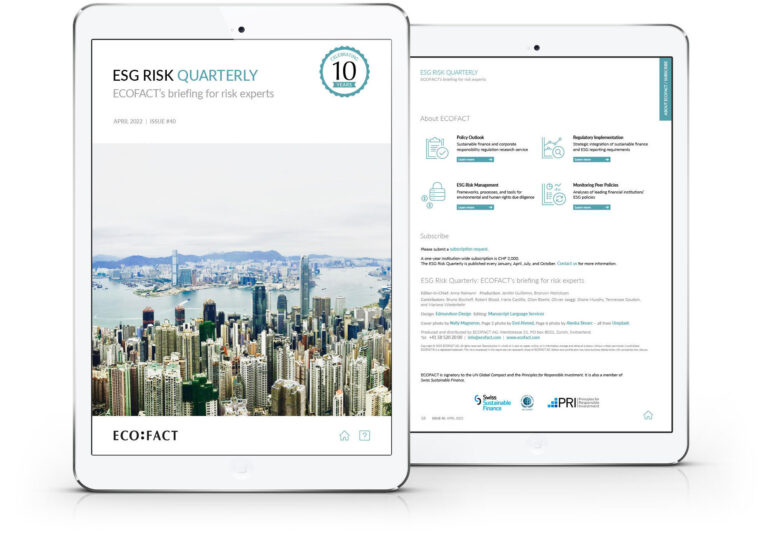Environmental and Human Rights Due Diligence… Today and Tomorrow
The accomplishments achieved in E&S risk management are impressive. Early movers have continued to expand the scope and depth of their E&S risk frameworks, and other financial institutions (FI) across the globe are rapidly gaining ground.
The sheer volume of criticism heaped upon the financial sector may lead some people to see it as the root of all evil. However, too many people forget that FIs are not to blame for E&S issues: In most cases, they are merely linked to the “wrongdoers.”[1] The real culprits are primarily their clients – both retail (including you and me) and commercial – whose activities are the real cause of sustainability challenges. Still, owing to their essential role in the economy, FIs bear a responsibility – and have a vested interest[2] – in understanding such links.
The road ahead for E&S risk teams will be an interesting but challenging one. In discussions with clients (we have worked with financial institutions for 20 years, which gives us a second reason to celebrate!), we have identified two key challenges that will require significant attention.
Firstly, due diligence has traditionally aimed at mitigating risks for FIs and/or their clients. However, when it comes to due diligence for responsible business conduct, the perspective is a different one. In the words of the OECD,[3] the objective of such due diligence is to assess “the likelihood of adverse impacts on people, the environment and society (…). In other words, it is an outward-facing approach to risk.” [4] This nut is harder to crack than you might think. FIs will be expected to develop methods to integrate these two perspectives, meaning that in some instances, FIs may have to take actions that go beyond those needed to mitigate risks and to protect companies’ franchises. Such actions cannot be justified internally from a purely business perspective. The key question here is, how far can FIs realistically be expected to go?
Secondly, due diligence requires that adverse impacts be identified, prevented and mitigated, that implementation and results be tracked, and that the way in which adverse impacts are addressed be communicated.[5] This comprehensive approach defines steps that are not necessarily part of E&S risk management processes today. In some lines of business, it will be difficult to find practical solutions in order to put all these steps into action.
However, if FIs embrace these challenges as opportunities, addressing them may help to achieve objectives that many E&S risk experts have been longing for: a) larger teams despite cost cuts, b) a stronger voice in decision-making processes, c) a greater positive impact, and d) a more level playing field for all market participants.
In short: It is time to acknowledge what financial institutions have achieved over the last few years. It is time to thank the people behind these efforts – including many of the readers of the ECOFACT Quarterly. But it is also time to prepare for the next steps that we must take.
 All posts
All posts Contact
Contact



